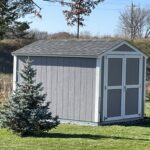Unless you’re one of the heroes (we’re talking about the extra sexy Black Widow of Marvel Comics fame), the black widow (genus Latrodectus) is one of the most feared spiders in North America. The image of that red hourglass on glossy black has been ingrained in our brains since childhood. For many people (myself included), the mere thought of black widows brings on an inextricable bout of terror and heebie-jeebies. And yeah, I know, “spiders are our friends.” BS. The day a black widow spider brings me a nice bouquet of flowers instead of goosebumps is the day I call them friend.
Anyway, time to be rational. Yeah, there are widow spiders all over the U.S. and Canada. Actually, there are five different kinds found north of Mexico: the brown widow, southern black widow, northern black widow, western black widow, and red widow. While they all come equipped with a lovely neurotoxic venom, you’ll be pleased to know that they are fairly non-aggressive and pretty much only bite if they feel threatened. Also, the number of people that actually die from a black widow bite is extremely small. On average, it’s less than three per year. Not surprisingly, the people at highest risk are children, the elderly, and those already in poor health. That being said, you should still be quite wary of them. A black widow spider bite can be bad news, even if you’re in good health. If you’ve been bitten by one or even suspect that you may have been, do yourself a favor and get to the hospital. If you simply want to take the risk of getting rid of black widow spiders before you get bit, then read on. Remember to always be careful, wear gloves and boots, and tuck your jeans into your socks. It looks cool. I promise.
Potential Black Widow Bite Symptoms
Symptoms include: numbness, tingling, abdominal pain, sweating, anxiety, dizziness, rash, nausea, cramps, tightness of chest, weakness, vomiting, difficulty breathing, difficulty with speech.
Black Widow Spider Identification
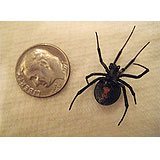
Female
Black widow females are shiny, jet-black spherical abdomen with two red triangles in the shape of an hourglass on underside (belly), triangles are not always joined, adults are about half an inch long not including the legs, about 1½ inches long with legs spread.

Male
Black widow males are light brown or gray with light bands across the back, hourglass shape is usually present but indistinct and more orangish or yellow, about half the size of the female with longer legs in relation to abdomen.
Best Control Methods for Black Widows
Avoid black widows through exclusion
Do whatever you can to keep black widows from getting into your shed in the first place. Walk around the outside of your shed with a caulking gun and a tube of sealant. Fill any little holes that you might see around wires, cables, faucets, outlets, etc. Fill cracks in the foundation. Look at your window screens and patch any holes (you can get Screen Repair patches at Amazon). Apply weather stripping to all windows and doors. If you don’t have them already, install door sweeps. These spiders are pretty small and can get through openings that you might think aren’t worth messing with.
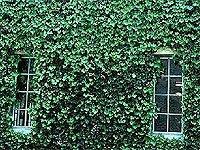
Make the outside of your shed and your yard inhospitable to black widow spiders
The first thing you will want to do is to clear away any and all vegetation that might be up close and personal with your shed, especially any vine growth or ivy. That stuff is a haven for spiders. Cut back shrubs, plants, and decorative grasses. Get rid of rock piles, and move any wood piles as far away from your shed as possible. Don’t use any outdoor lighting. Outdoor lighting attracts bugs galore. Black widows eat bugs. Do the math. If you must use outdoor lights, go with yellow or sodium lights to minimize the number of insects you lure in.
Indoor black widow control measures.
Don’t leave things lying around. Pick up clothes, blankets, magazines, newspapers, tarps, wood piles, and anything else that a black widow might be

able to use for a hiding place. Rearrange and shed shelving or furniture on a regular basis so you can find any widows that might have set up shop. Don’t store firewood indoors. Black widows like moisture, so set up a few dehumidifiers. If you find other spiders (with the exception of brown recluse spiders) leave them alone. Not only will some spiders eat black widows, they also add competition for other bugs so the widows don’t eat quite as well.
Go on a search and destroy mission.
One of the best ways to kill a black widow is simply to squish it. At night (they’re nocturnal), go around with a flashlight and a stick and let the fun begin. Inside or out, search everywhere. If you see one, put your stick to use. Just make sure you squish it good and proper. If you miss and the widow hits the floor or ground, stomp it good and leave no doubt. Keep in mind that black widows, females especially, are never far from a hiding place. If you screw up, they will go directly into hiding and you might not get another chance.
Put your vacuum cleaner to use.
Your shop vac a pretty good spider wranglin’ tool. Check your shed over from top to bottom. Look in closets and shelves, behind work benches and things in storage, and search anywhere else you think a black widow could be hiding. If you’ve got the guts, spend some time in the rafters and around the outside. These are great places for black widows. The shop vac is nice because it can sometimes pull the black widows from hidey-holes that might have protected them from you. Vacuum up any egg sacs you see too. When you’re done, remove the vacuum bag, put it in a tight-closing plastic sack, and put it outside in the trash immediately.
and shelves, behind work benches and things in storage, and search anywhere else you think a black widow could be hiding. If you’ve got the guts, spend some time in the rafters and around the outside. These are great places for black widows. The shop vac is nice because it can sometimes pull the black widows from hidey-holes that might have protected them from you. Vacuum up any egg sacs you see too. When you’re done, remove the vacuum bag, put it in a tight-closing plastic sack, and put it outside in the trash immediately.
Best Ways to Get Rid of Black Widows
Due to their extreme overabundance (even one is too many), there are a number of pesticides on the market today that work well for killing black widow spiders. There are several different application methods too. There are treatments for outside the home, sprays for direct contact, dusts, and liquid spot treatments. For best results, I recommend using several, if not all, of these.
For outside the shed.
Before filling foundation cracks and holes, apply something like Delta Dust Insecticide (active ingredient: deltamethrin) or Drione Dust (active ingredients: pyrethrins, piperonyl butoxide, and amorphous silica gel) to help avoid future invasions. For spraying trees, plants, and lawn, Spectracide Triazicide Insect Killer. Demand CS (active ingredient: lambda-cyhalothrin) is a good spray for outdoor foundations.
Sprays for direct contact.
If you’ve got one of the little nasties in your sights, hit ’em with a non-residual aerosol spray like 565 Plus XLO (active ingredient: pyrethrins) or CB-80 Extra Aerosol (also pyrethrins). They’re both safe to use and have a quick knockdown and kill time.
Dusts.
These work quite well for out-of-the-way places like basements, attics, wall voids, and crawl spaces. Look for products like Drione Dust and Delta Dust Insecticide (both mentioned above). Essentria G Granular Insecticide from EcoExempt Company is a plant-based (hexa-hydroxyl) insecticidal dust. It’s spendy, but you can find a 25lb bag of this powder at Amazon.
Liquid spot treatments.
These are generally available in powder form and are mixed with water to be used as a residual spray. Demon WP Insecticide, Cynoff EC, and Cynoff WP (active ingredient: cypermethrin) all come highly recommended. Demand CS (see above) can also be used indoors as a spot treatment.
Natural Black Widow Control
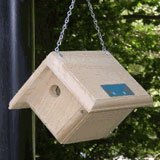
Wrens.
These little birds spend their entire day eating bugs and spiders. Hang several nest boxes around your yard to draw them in and keep ’em around.
Plus, wrens are a nice bird to have around, unlike a crow or swallow.
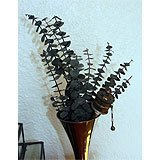
Eucalyptus.
Place small bunches of eucalyptus in various places around your shed. It is a natural black widow (and general spider) deterrent.
It won’t grow everywhere. Check the zones first.

Horse chestnuts.
Scattering these around your shed, especially in window sills, is said by many to deter spiders from entering your shed uninvited.



